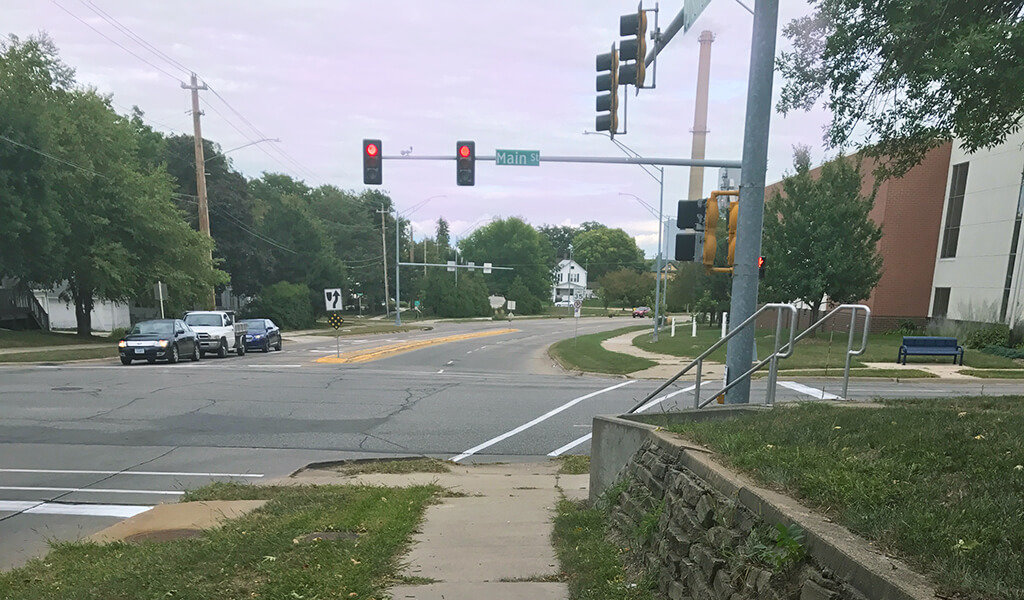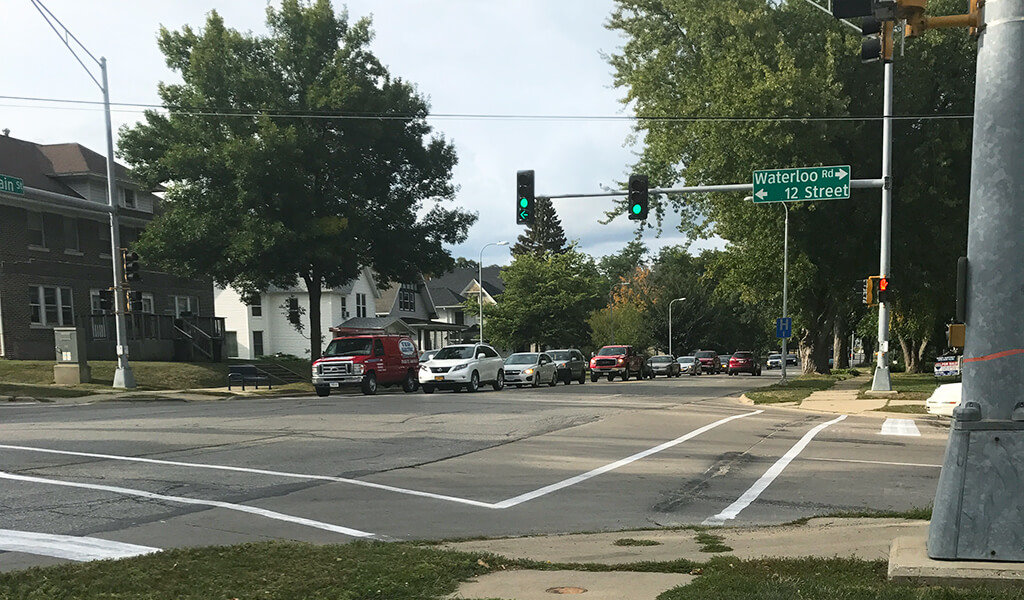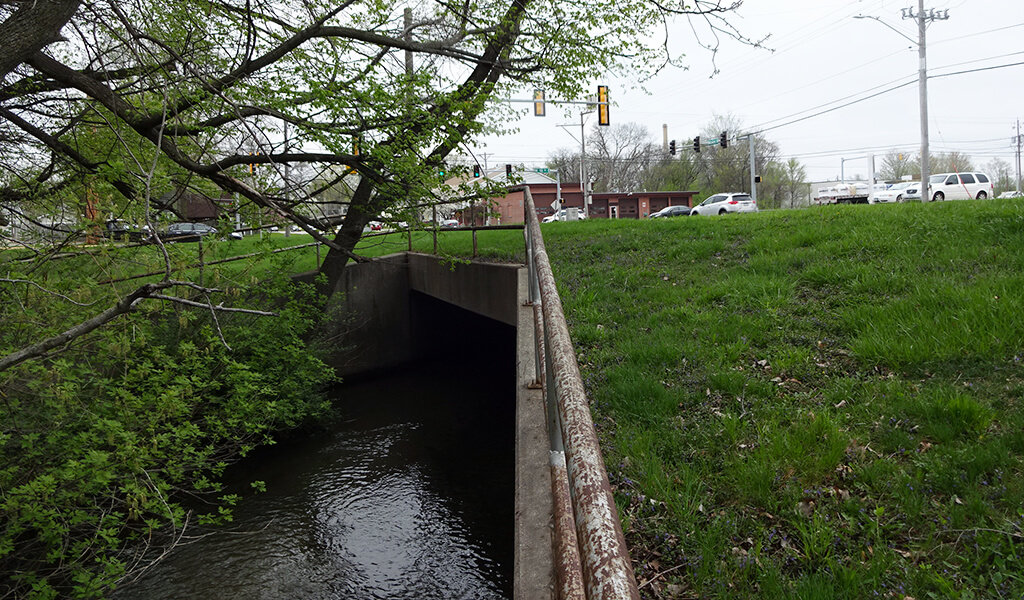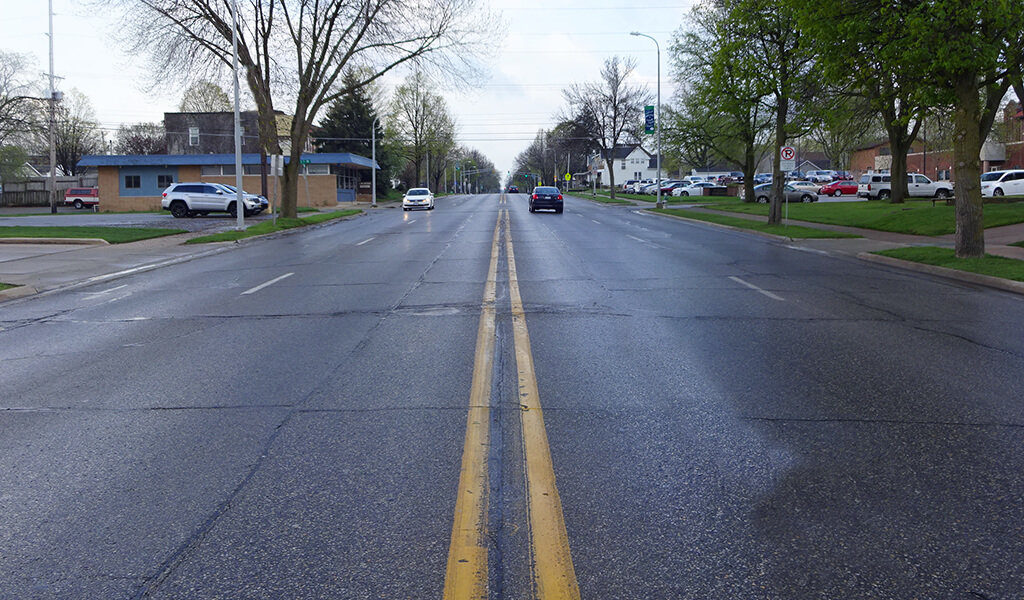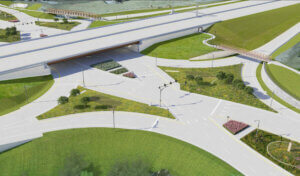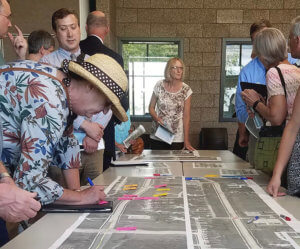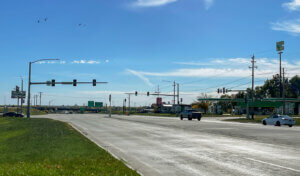
Reinventing Roadway Corridors to Meet Future Demands
Once a primary north/south Iowa highway through Cedar Falls, the Main Street corridor no longer experiences the traffic demand that it did before the construction of the relocated Iowa 58 freeway in the early 1990s. This four-lane mostly undivided roadway does, however, still serve local traffic to residential and business areas in the downtown and to other adjacent land uses within the corridor. As the pavement along Main Street had reached the end of its useful life, in addition to other underground utility maintenance needs, the City of Cedar Falls requested Snyder & Associates perform a traffic study on the corridor from 6th Street to University Avenue to determine the appropriate design alternatives for the corridor moving into the future.
With funding to reconstruct the roadway already included in the capital improvement budget, the primary goal of this study was to identify potential design alternatives for safety and traffic operation improvements along the Main Street corridor with enhanced pedestrian and bicycle mobility. Additionally, it entailed the creation of a corridor plan incorporating those improvements while considering all modes of transportation and is fully consistent with current and future land uses. Finally, this analysis allowed our engineers to provide recommendations for the most efficient configuration of the reconstructed roadway that was congruent with the Complete Streets Policy previously adopted by the city.
Corridor Data Analysis Guides Alternatives
The goals of the corridor study were accomplished through the examination of multiple information channels, including; traffic volume history, crash history, pedestrian and bicycle needs, the collection of public input, and forecasted traffic demand. The analysis of this data allowed our traffic engineers to evaluate and develop intersection and corridor alternatives. These alternatives were then evaluated based on their ability to meet complete streets objectives, the minimization of right-of-way impacts, and creating a measurable improvement to safety and traffic efficiency along the corridor.
Alternative Lane Configurations for Safer Travel
After evaluating the data, several alternatives for lane configurations through the corridor were developed that not only create a safe and efficient roadway but also considered accommodations for all modes of travel. This included the possibility of on-street bike lanes to address the recommendations of the Cedar Falls Bicycle and Pedestrian Advisory Committee. The other primary consideration was to minimize any right-of-way needs and, if possible, work within the same (or even narrower) back-of-curb width that already exists in the corridor. Three alternatives were considered after the evaluation:
- Alternative 1: Maintain the existing four-lane cross-section. Rebuild the roadway as is
- Alternative 2: Switch to a three-lane cross-section. Rebuild the roadway with a nearly identical width, but incorporate one through lane in each direction with a center two-way left-turn lane (TWLTL) and bike lanes on each side
- Alternative 3: Boulevard cross-section. Rebuild the roadway with Alternative 2 improvements from Seerley Boulevard to 18th Street and then transition to a two-lane section with bike lanes from 17th Street to 8th Street, including a central grass median with breaks at public street intersections
The use of roundabouts was also reviewed as an option instead of traffic signals at three key intersections in the Main Street study area: Seerley Boulevard, 18th Street, and 12th Street. A bridge located near the Seerley Boulevard intersection eliminated the possibility of a single-lane roundabout at that location. However, it was determined the 12th and/or 18th Street intersections would operate well as single-lane roundabouts versus the current traffic signals. It would, however, require right-of-way acquisition in each quadrant, as well as utility considerations and unique fire department traffic flow demands.
Public Input & Feedback Meetings Keep Residents Informed & Drive Decisions
Two public meetings were conducted during the study period. The first meeting was to seek public input on issues and concerns within the corridor area. This open house-style meeting allowed those attending the opportunity to visit with the city staff and our engineering team and learn valuable information about the existing conditions along the corridor. It also provided the environment for our team to listen to public needs and concerns. A second meeting incorporated a formal presentation about the traffic study analysis and findings, including displays of the proposed improvement alternatives for the corridor and the specific intersection treatment options. Further listening sessions and discussion periods were held, as well.
Cost-Effective Recommendations
At the conclusion of the process, the Snyder & Associates team recommended the reconstruction of the Main Street corridor between Seerley Boulevard and 6th Street as a three-lane facility. This solution would provide one through lane in each direction, develop a center two-way left-turn lane (protected lefts at signalized intersections), and consider roundabouts to replace the traffic signals at 12th and 18th Streets.
Our recommendation also included bike lanes within the same corridor and the construction of sidewalks on the east portion of the corridor between Seerley Boulevard and 18th Street. Cost comparisons between the alternatives range from $4.4M to rebuild the existing roadway to $5.2M to rebuild a three-lane option with a 12th Street roundabout.
However, these are only initial construction cost opinions and do not factor in additional utility upgrades, improved safety benefits, and travel delay improvements that will be realized over time with the three-lane alternative and roundabout additions. While upfront costs will be higher than traditional signalized intersections, our firm’s study determined roundabout conversions will result in considerable traffic safety and delay cost savings over the lifespan of the project, as well as improved efficiency and traffic flow.
